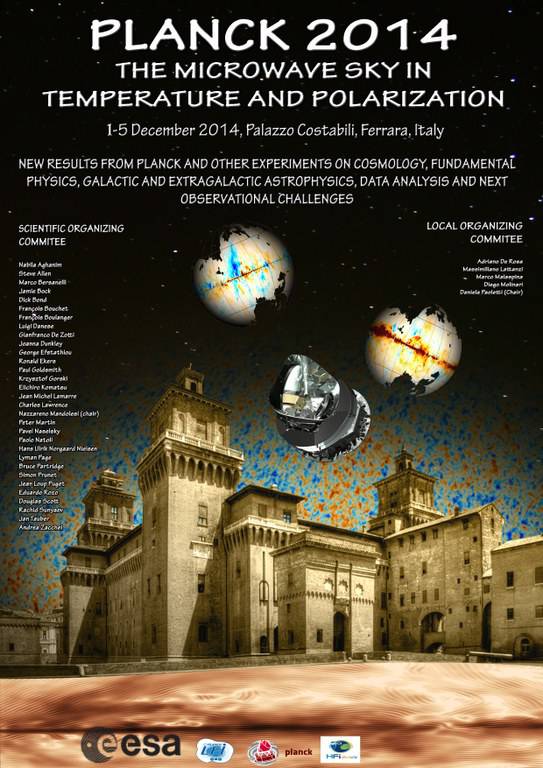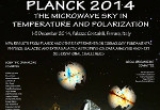Planck : new revelations about Dark Matter and relic neutrinos
Beginning the 1st December at an international conference in Ferrara (Italy), the Planck collaboration, which involves the CNRS, the CEA, the CNES and several French universities among other institutes, reveals the results of four years of observation by the ESA Planck satellite of the Cosmic Microwave Background (CMB), the oldest light in the universe. For the first time, the CMB is accurately measured on the whole sky in both its intensity and polarisation.
In 2013, the map of intensity anisotropies of the CMB observed by the Planck satellite was released. This map provides information on the location of matter about 380,000 years after the Big Bang. Now, by measuring the polarisation of the CMB, Planck has been able to see the state of motion in which matter was then. Our vision of the early universe has thus become dynamic. This new dimension and the quality of data allow us to test the many parameters of the standard cosmological model. In particular, they shed light on the most elusive stuff in the universe: Dark Matter and neutrinos.
New constraints on Dark Matter
The new results of the Planck Collaboration allow to rule out many Dark Matter models, those in which the annihilation of Dark Matter - Dark Antimatter particles would be important. Indeed, such an annihilation process would have produced an amount of energy that would have affected the evolution of the primordial matter-radiation fluid, particularly during the epoch when the CMB has been released. However, the most recent observations do not show any signature of such process. Furthermore, the Planck Collaboration confirms that Dark Matter represents a little more than 26% of the current content of the Universe (value from the 2013 analysis), and sharpens the map of the matter density a few billion years after the Big-Bang through measurements of temperature anisotropies and B-mode polarization.
Neutrinos from first instants detected
The new results from the Planck collaboration concern also neutrinos. These elementary particles, produced in abundance in the Sun for example, fly through our planet with almost no interaction, which makes them extremely difficult to detect. It is therefore not possible to directly detect the very first neutrinos produced less than a second after the Big Bang, as they have extremely low energies today. Yet for the first time, Planck has detected unambiguously their effect on the map of the CMB.
The primordial neutrinos detected by Planck were released when the universe was still opaque to light but already transparent to these particles. 380,000 years later, when the background radiation was released, it was marked with the imprint of neutrinos as photons interacted gravitationally with these particles. Thus, detecting the oldest photons has enabled the Planck collaboration to constrain the properties of neutrinos.
Planck observations are consistent with the standard model of particle physics. They essentially exclude the existence of a fourth neutrino family considered before as possible from the final data of the WMAP satellite, the US predecessor of Planck. Finally, Planck enabled to set an upper limit on the sum of the neutrino masses, which is now set at 0.23 eV (electron volts).
The Planck full-mission data and the associated articles will be submitted to Astronomy & Astrophysics (A&A) and will be available from the 22 December 2014 on the ESA website. These results have been obtained in particular from measurements made with High-Frequency Instrument (HFI) which has been designed and built under the direction of the Institut d'Astrophysique Spatiale (CNRS/Université Paris-Sud) and operated under the direction of the Institut d'Astrophysique de Paris (CNRS/UPMC) by different laboratories involving the CEA, the CNRS and universities, with funding from the CNES and the CNRS.
Contacts at the IAS : Jean-Loup Puget & Marc-Antoine Miville-Deschênes





